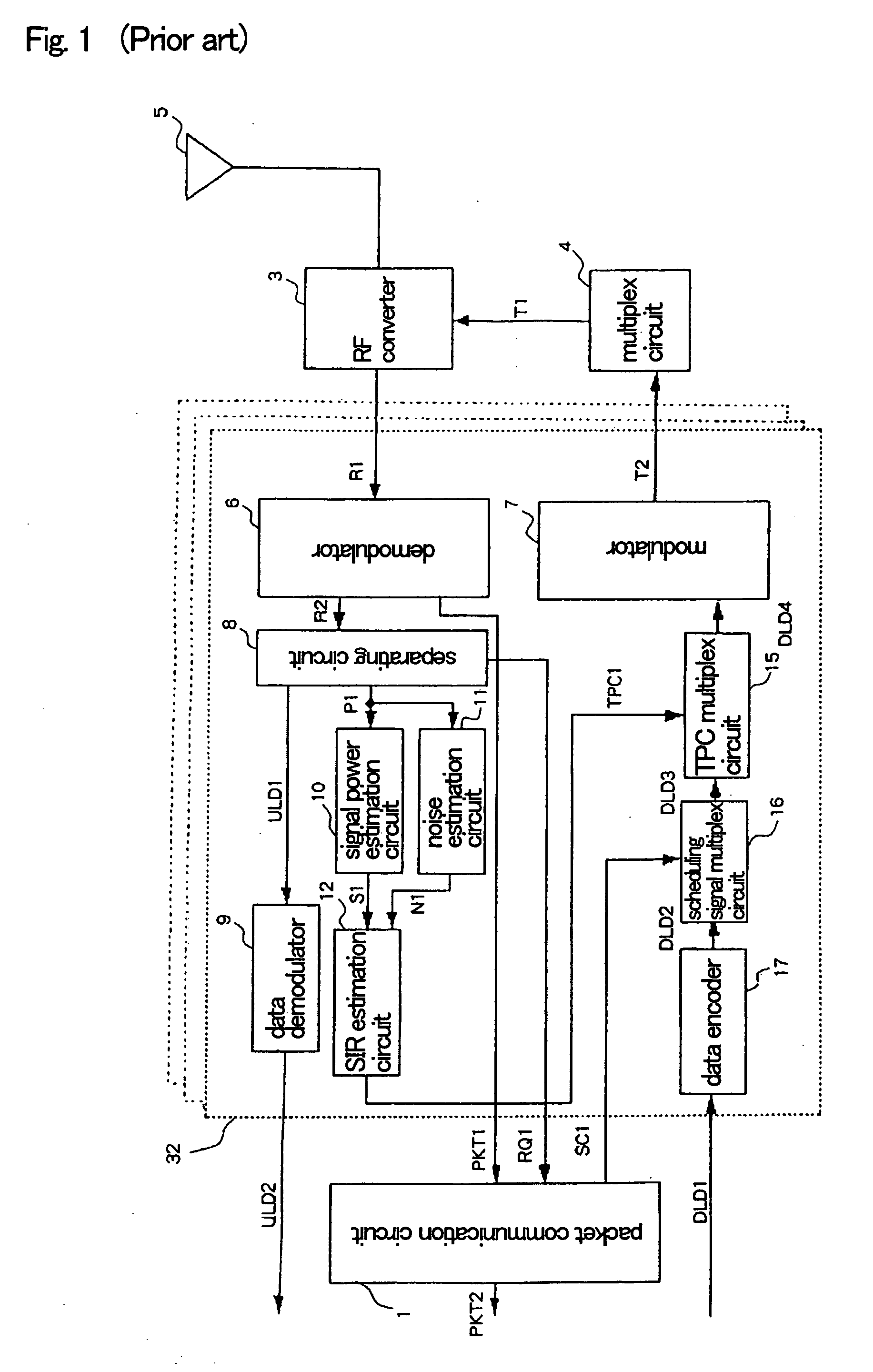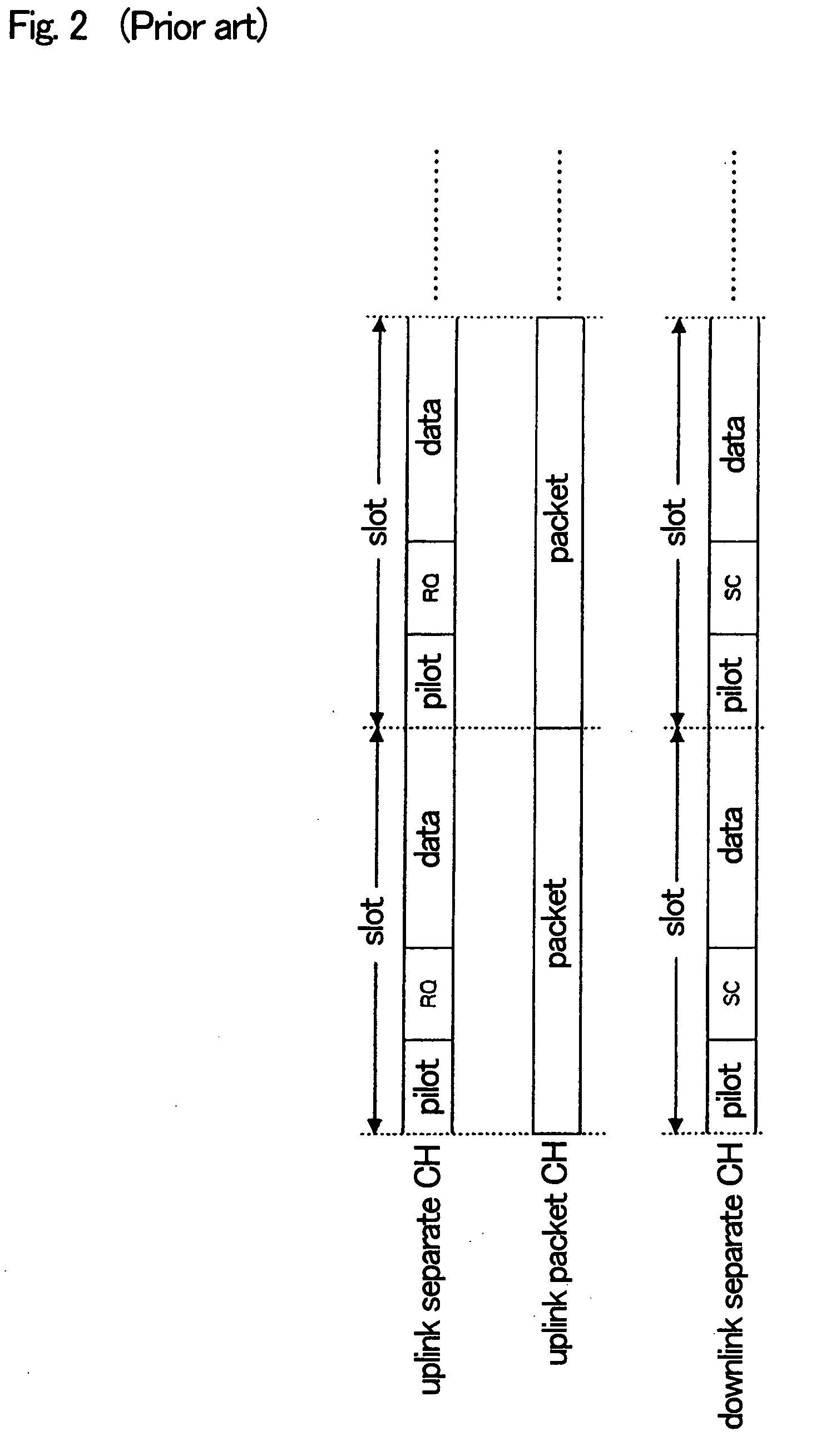Uplink transmission power control in a CDMA base station
a transmission power control and cdma technology, applied in power management, multiplex communication, sustainable buildings, etc., can solve the problems of reducing the quality of communication, and increasing the amount of interference in the entire cell. , to achieve the effect of not increasing the amount of interference in the entire cell
- Summary
- Abstract
- Description
- Claims
- Application Information
AI Technical Summary
Benefits of technology
Problems solved by technology
Method used
Image
Examples
Embodiment Construction
[0034] The present invention is premised on the assumption that a base station and mobile stations perform wireless communication using CDMA scheme and that closed-loop uplink transmission power control is performed between the base station and mobile stations.
[0035] Referring to FIG. 3, there is shown a CDMA base station system according to an embodiment of the present invention, comprising packet communication circuit 1, a plurality of CDMA modulating and demodulating circuits 2, RF converter 3, multiplex circuit 4, and antenna circuit 5. In FIG. 3 the same components as those in FIG. 1 are assigned the identical reference numerals and hence their descriptions are omitted.
[0036] Each CDMA modulating and demodulating circuit 2 includes demodulator 6, modulator 7, separating circuit 8, data decoder 9, signal power estimation circuit 10, noise estimation circuit 11, SIR estimation circuit 12, noise comparator 13, TPC bit generating circuit 14, TPC multiplex circuit 15, scheduling s...
PUM
 Login to View More
Login to View More Abstract
Description
Claims
Application Information
 Login to View More
Login to View More - R&D
- Intellectual Property
- Life Sciences
- Materials
- Tech Scout
- Unparalleled Data Quality
- Higher Quality Content
- 60% Fewer Hallucinations
Browse by: Latest US Patents, China's latest patents, Technical Efficacy Thesaurus, Application Domain, Technology Topic, Popular Technical Reports.
© 2025 PatSnap. All rights reserved.Legal|Privacy policy|Modern Slavery Act Transparency Statement|Sitemap|About US| Contact US: help@patsnap.com



